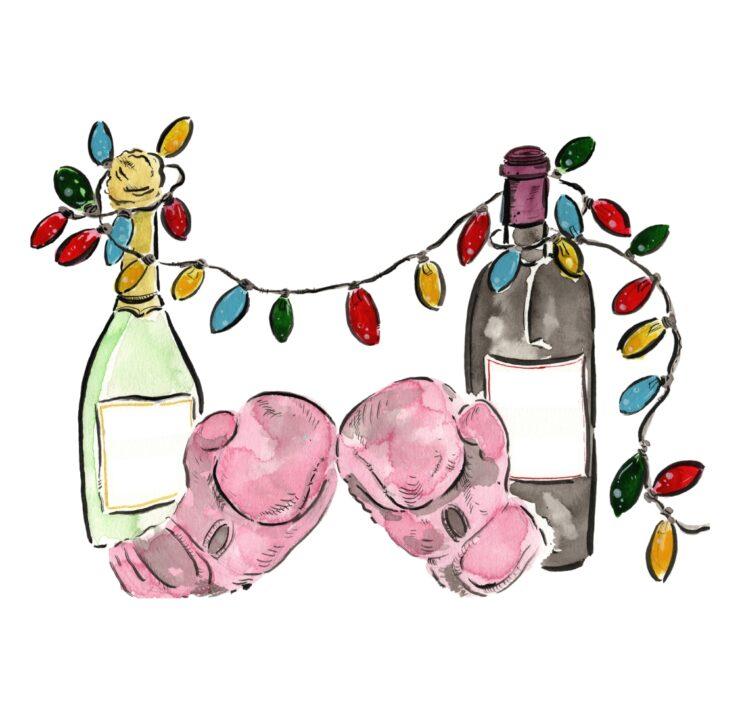This article is brought to you in partnership with Vinovest
Don’t look now, but it’s a bear market and the economy is on shaky ground. The S&P 500 is down 13% this year. Inflation has soared to 8.3%. And don’t even get me started on gas prices.
So, what is an investor to do? For many people, the answer is fine wine. Let me explain.
#1 – Fine Wine Has a Low Correlation with Traditional Markets
If you take one thing from this article, let it be this: fine wine has a low correlation with traditional markets. How low, you ask? Lower than a limbo stick.
According to Venn, fine wine has a 0.12 correlation with the S&P 500, an index that tracks the 500 largest companies in the United States. That means the price of fine wine rarely moves in tandem with the stock market. Whether stocks go up or down, fine wine marches to the beat of its own drum. (As a point of reference, the MSCI World Index, which tracks global equities, has a near-perfect correlation with the S&P 500 at 0.96.)
Fine wine plays by its own rules. That’s because the factors influencing the stock market have little impact on wine prices and vice versa. Wine investors care about harvest yields, terroir, weather, and critic scores. Traditional investors care about interest rates, corporate leadership, and dividends. See the overlap? Didn’t think so.
This low correlation makes fine wine an outstanding hedge against economic downturns and inflation. Even when the stock market plummets, fine wine does a remarkably good job of retaining its value. For instance, the S&P 500 fell 18.8% during the first quarter of 2020 due to the outbreak of COVID-19. Meanwhile, fine wine barely budged, only dipping 4.1%. So, when you check our portfolio during bumpy economic times, the only red you’ll see will be Cabernet Sauvignon. (It could be by Syrah, Merlot, or Chianti, too.)
Oh yeah great market today pic.twitter.com/C24PeOMe9V
— Dan Toomey (@dhtoomey) May 5, 2022
#2 – Fine Wine Has Lower Volatility Than Global Equities
Stock market volatility is about as fun as a root canal. When your net worth fluctuates in a short time, it can be a hair-graying experience. That’s especially true if you’re close to retirement, trying to sell your house, or liquidating your assets. With dramatic peaks and valleys in the stock market, it’s challenging to know when to hold or withdraw your money.
Fine wine reduces that uncertainty. It has roughly one-third of the volatility of global equities, leading to a smoother investing experience. If the stock market resembles a roller coaster, think of fine wine as an escalator.

Fine wine has low volatility, partly because the secondary market is relatively illiquid. (Ironic, right?) When people buy fine wine, they tend to hold onto their investment. You’re unlikely to see massive selloffs or abstinence cause prices to crater.
The same cannot be said for the stock market. Apps like WeBull and Robinhood have democratized investing, allowing anyone to buy or sell stocks whenever and wherever. In a bull market, that’s no problem. However, when things go south, we can see days like March 16, 2020, when the S&P 500 dropped 12% in one day.
#3 – There Is a Global Fine Wine Shortage
There’s no shortage of demand for fine wine. Still, winemakers are having a hard time keeping up. Recent vintages have generated extremely low yields due to inclement weather. According to the OIV, France’s 2021 harvest was the smallest since 1957. The organization also expects a 13% decline in wine production in Europe, making it most expensive to buy wine from beloved regions such as Bordeaux, Burgundy, Piedmont, Tuscany, Rioja, and Mosel.
Early spring frosts, drought pressure, and mildew aren’t the only thing putting upward pressure on prices. Global supply chain issues have rippled into the industry, too. Wineries have too much wine but not enough bottles. It’s created a logistical headache for producers as they scramble to get their wine out of oak barrels.
If you’re an investor, alarm bells should be going off in your head. Rising demand and diminishing supply mean a perfect storm for investment-grade wine. Moneymade.io backs this idea up. According to its website, fine wine has handily outperformed a range of asset classes over the last year.
· Fine Wine: 28.9%
· Residential Real Estate: 22.1%
· Fine Art: 20.2%
· Farmland: 10.7%
· S&P 500: -1.5%
· Gold: -1.9%
· Bonds: -11.6%
· NASDAQ: -13.0%
· Bitcoin: -18.8%
How to Invest
You can invest in fine wine in a couple of ways. First, there are managed portfolios. A portfolio advisor will work with you to select the best wines based on your investing goals and horizons. It’s straightforward, hands-off, and easy to get started.
Second, there are trading portfolios. This option is ideal if you want complete control over your wine selection and when you buy and sell. You can invest as you do with stocks and a brokerage account.
Vinovest is a wine investing platform with managed and trading portfolios. The easy-to-use interface and attentive customer service have garnered more than 130,000 registered users. The fact that the average wine on the platform returned 19.3% doesn’t hurt either.
It’s time to put inflation and economic woes in their place. All you need is a bottle of red or white.









